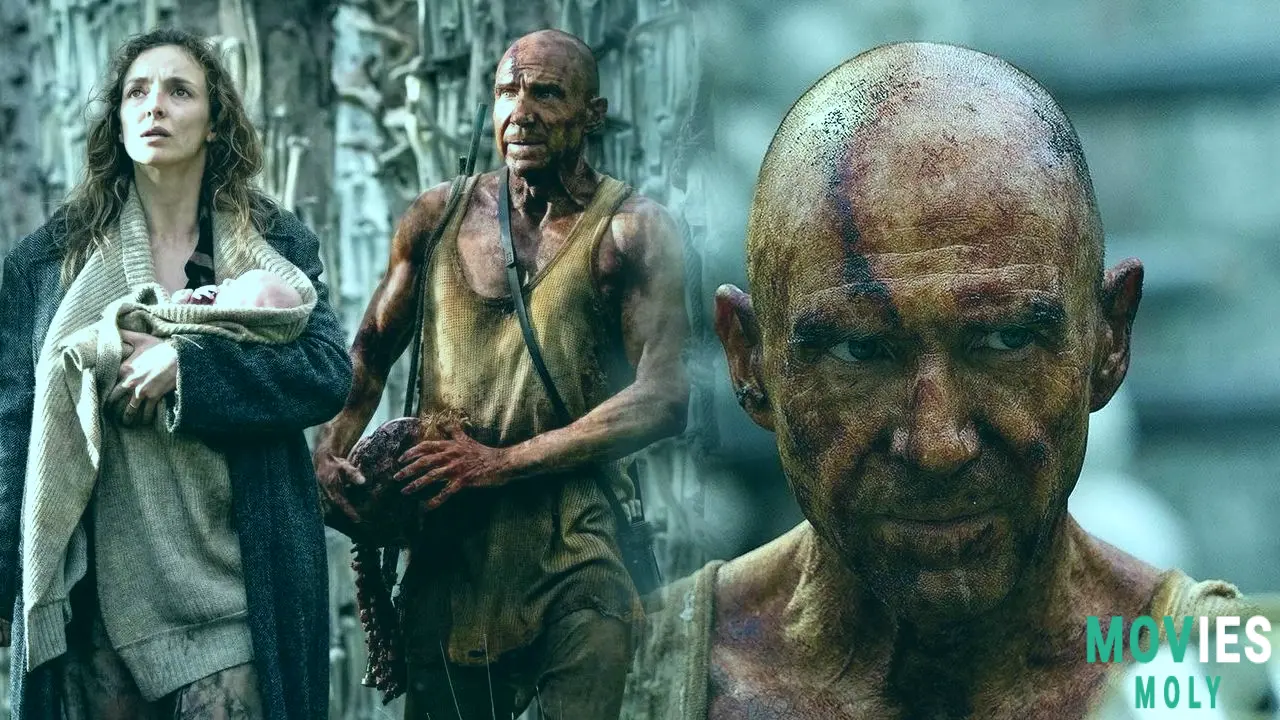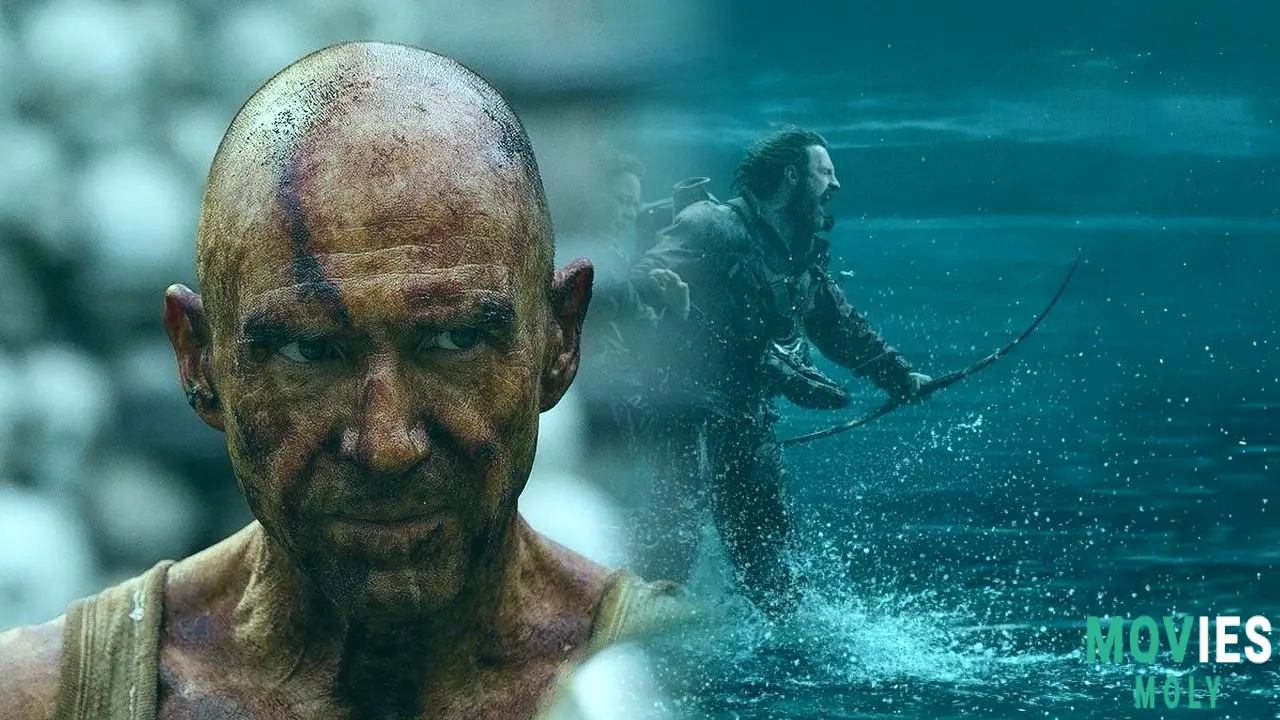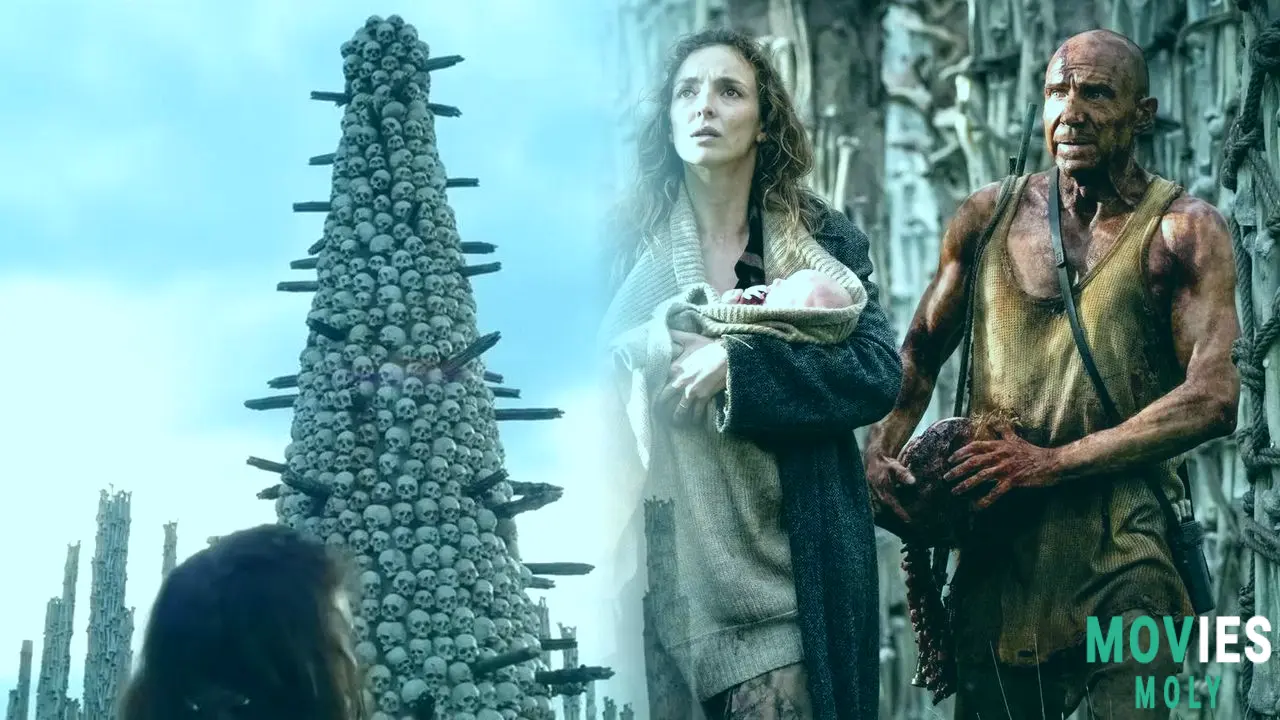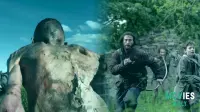The new movie in the series, 28 Years Later, has a lot of shocking things in it. In the last scene, we see these ninjas who are inspired by Jimmy Savile. There is a suggestion that ravens may have some connection to some of the sick. And of course, the huge zombie private part that was bouncing about the whole movie. I don't know why that sick man had to be hanging there, but I guess that's why I'm a movie reviewer and Danny Boyle is a movie director. But the big stunner comes approximately halfway through the movie.
Spike (Alfie Williams) and his mother Isla (Jodie Comer) find a pregnant woman who is sick and in labor. Isla does something courageous and a little dumb. She chooses to help the sick mother give birth. The kid is born perfectly healthy, and the sick woman demonstrates a level of understanding we haven't seen from her before. She seems to realize that Isla is assisting and lets her give birth to the baby. Yes, she attacks Isla shortly after, but it doesn't imply she's back to being completely wild. She might just be trying to get her baby back. You would think that would be too much for her to understand about being a mother. In 28 Weeks Later, Don forgets about his wife as soon as he falls sick. This diseased woman, however, might still perceive her healthy child as someone to keep safe.
It's a big deal that people who are sick can have kids. Another significant thought is that their babies are born healthily. But maybe the most essential part of the scene where the baby is born isn't the infant. It's how the alpha responds to it. The uninfected call the infected man Samson (Chi Lewis-Parry) because he is unusually huge and strong. He comes by not long after the baby is delivered. He viciously kills Swedish soldier Erik (Edvin Ryding), who shot and killed the sick mother. Samson sees the infant in Isla's hands and runs after her angrily. But first, he mourns the loss of the sick woman. It's pretty evident what this means: Samson is the baby's father. He cares for both the sick woman and his new baby. Is this the greatest way for him to show he cares? Not likely. But he is still displaying emotions that he shouldn't have.
In 28 Years Later, the Alphas give the infected new levels of intelligence and horror.Samson's actions are more than just rage; they show a scary step forward for the virus.
Samson and the other alphas are even scarier because they have their own customs. They pull off the head of an animal, or in this case Erik, after they kill it. It comes with a piece of the spine still attached. Then they put it in a tree to indicate their territory. This is nasty, but it demonstrates that they have a plan. It's not just violence for no reason. It is on purpose.
It's like how Don from 28 Weeks Later seemed wiser than the zombies from 28 Days Later. Samson looks like he knows more than Don. It looks like the virus kept evolving. It is getting closer to the point where the sick people act more and more like the healthy people. They might constantly be against average people. But maybe they're slowly developing their own human-like culture within their own group of infected. This makes us wonder a lot about what is really human and what is scary.
Director Danny Boyle told IGN that there have been evolutions since they did not want the infected to just stay the same. He also said that the Rage Virus is like steroids for those people who want to grow muscle. This seems to make them tough and hard to hurt. This is why the Alphas can keep moving even after taking a lot of arrows. The guards had to use large flaming spears to destroy them. They are much harder to beat now since they are stronger and smarter. It implies that the people who lived through it are now facing a bigger, smarter threat than ever before.
The Birth of Baby Isla and What It Means for the Future of Humanity

Could this new life, which came out of nowhere, be a sign of hope or a worse danger?
The whole story of infant Isla seems a little familiar. Some of this was in Children of Men. That was another dystopian movie where people had to rescue a baby out of a place that didn't like babies very much. The infant in Children of Men, like the baby in 28 Years Later, represents hope. In Children of Men, the baby shows that humanity's troubles with fertility don't have to be the end. The infant in 28 Years Later shows that even bad things can lead to beautiful things. It seems impossible that a healthy baby could come from parents who appear so sick. The movie says that the placental barrier kept the infection from getting to baby Isla. This chapter of the novel offers a dosage of great hope in a series that is normally very grim.
We still don't know for sure if tiny Isla is healthy or not. This might be another Alice Harris predicament, like in prior movies. Isla could still carry the infection even if she is immune. This might also be a new, smarter version of the virus. It might not become active until she is old enough to do significant harm. It's a scary thought. If Isla's tale stays as promising as 28 Years Later says, maybe she could even have the treatment for the illness. Her birth condition is worse than Ellie's in The Last of Us, although they are similar. Ellie is immune because her mother was sick right before she gave birth. Isla's mother was sick a long time ago, but maybe the same basic guideline still applies. There is a huge chance that she could save the world, at least in the UK. But she might also be what drives people down again.
This plot twist changes everything we thought we knew about the infected. It makes it seem like they aren't just mindless animals. They can feel, defend, and maybe even make new life that isn't sick. This provides the series a new path to follow. This means that the next movies will have to deal with these new, hard questions. The creators did a good job of keeping the story fresh. It keeps us on our toes and makes us think more about the world they've made.
What do these changes mean for the future of the 28 Days Later series?

The evolution of the infected raises big questions because more sequels are planned.
This is the first movie in a planned series of three. This means that we will be able to watch these ideas evolve. The following movie, called 28 Years Later: The Bone Temple, will definitely add to this. The show seems to be saying that people who aren't infected might not be much better than people who are. Samson kills healthy people without caring, but isn't this the same as Jamie (Aaron Taylor-Johnson)? Jamie shows Spike how to murder the infected without thinking or emotion.
Yes, it's easy to see why Jamie is dealing with the infected the way she does. But the scene where the kid is born is the first time in the series that Jamie's way doesn't feel like the only way. Dr. Kelson, who is calm and pleasant, comes into the story shortly after this. He saves Samson's life over and over, and it never hurts him or Spike. 28 Years Later is the first time the series says that the infected and uninfected could get along. It doesn't entirely believe in this theory yet, but it does pose the topic. It turns the combat into something more than just a fight for survival. It adds a moral conflict that wasn't there previously.
The way this movie was made is also very crazy. 28 Years Later used an even more daring strategy than 28 Days Later, which used consumer-grade digital video. The cinematographer, Anthony Dod Mantle, devised a special gear that could hold up to 20 iPhones at once. This made it possible to cut quickly and see the same picture from many different viewpoints. This technique of editing, especially in action moments, makes the movie feel broken apart, like a music video. It gives you a strong, immediate sense of urgency. It can be exciting, but it can also make you feel a little dizzy. For horror enthusiasts, it has a mix of scary and amusing gore that is both serious and funny. One alpha uses a recently severed human head, still linked to its spine, as a weapon. That's really messed up.
Zombie movies often show what was going on at the time they were filmed. Night of the Living Dead talked about racism. Dawn of the Dead was a criticism against consumerism. The first 28 Days movie seemed to be about how scared people were following 9/11. People thought of 28 Weeks Later as a movie about the Iraq War. 28 Years Later shows a Britain that is cut off from the rest of the world following COVID and Brexit. Mainland Europe thinks it is cursed. There are a lot of things that aren't said in this vision. There could be more serious anxieties hiding under the noisy, wild surface of this thriller. You won't have time to think about them since a gigantic zombie with a severed head is chasing you. Baby Isla might either save or destroy the world. We won't know until January 2026, when 28 Years Later: The Bone Temple comes out.



